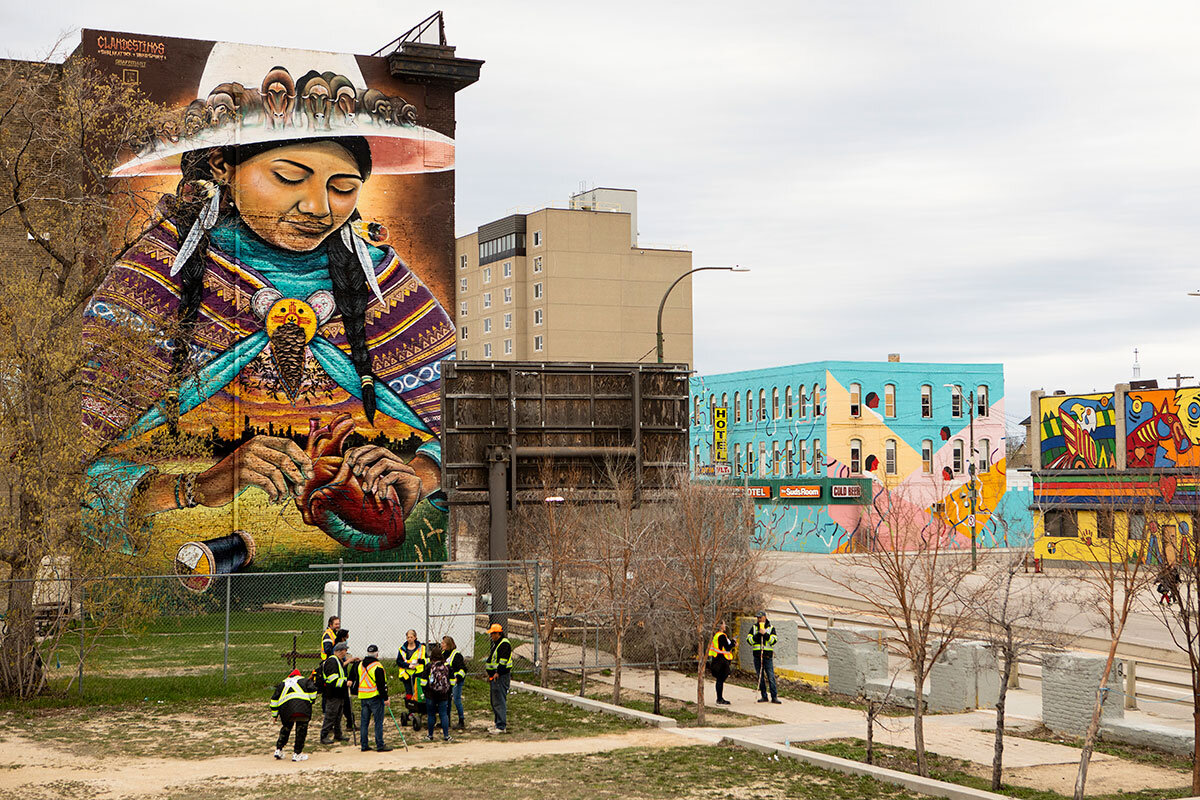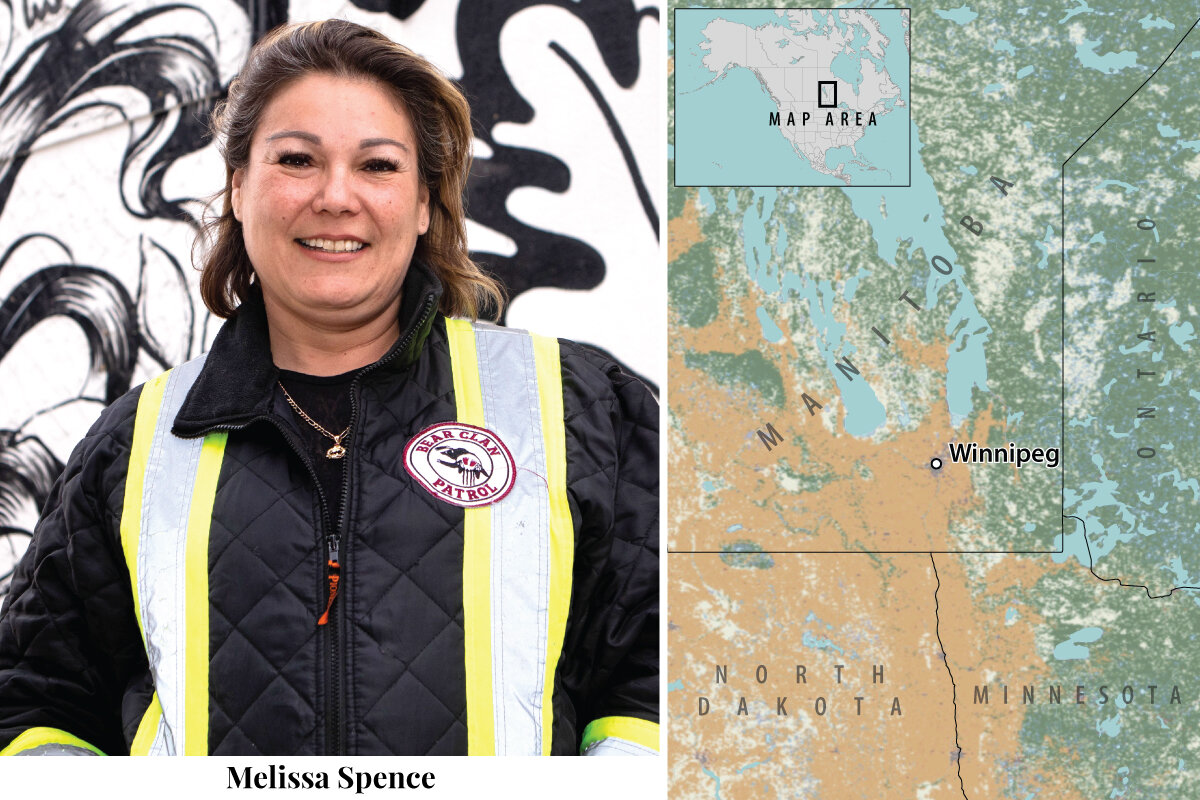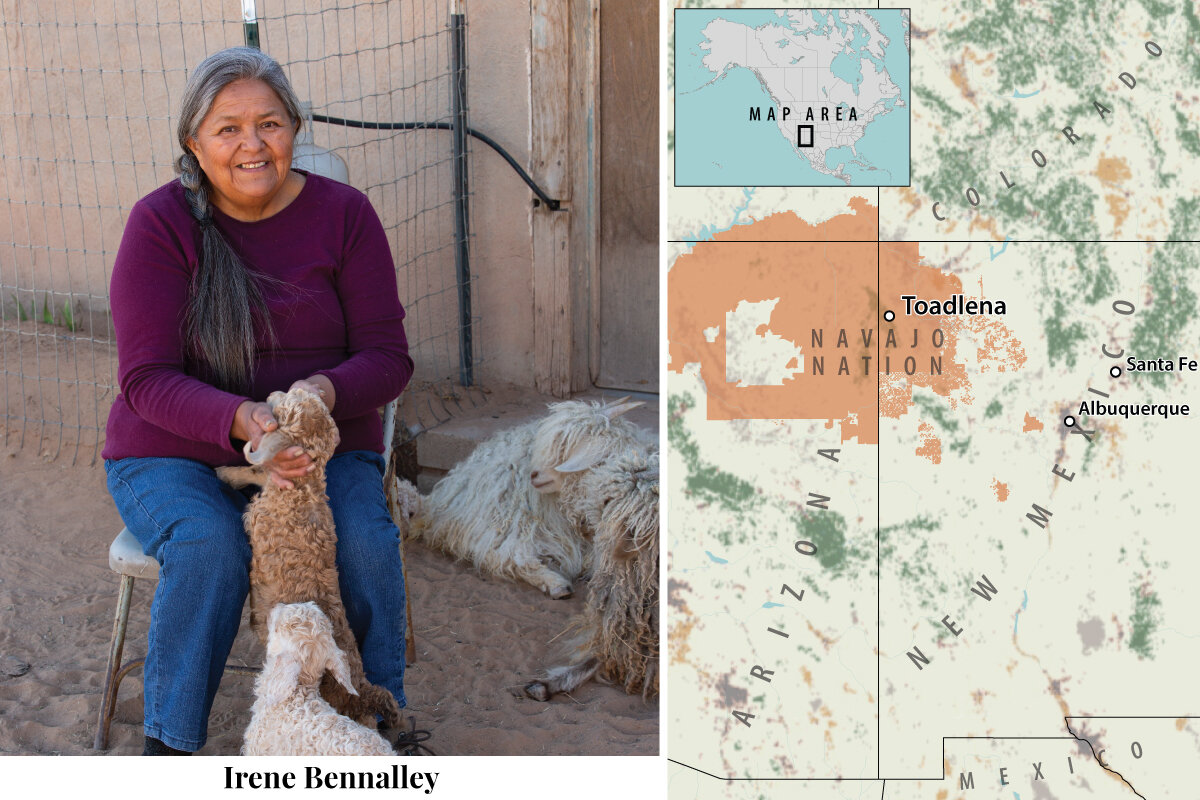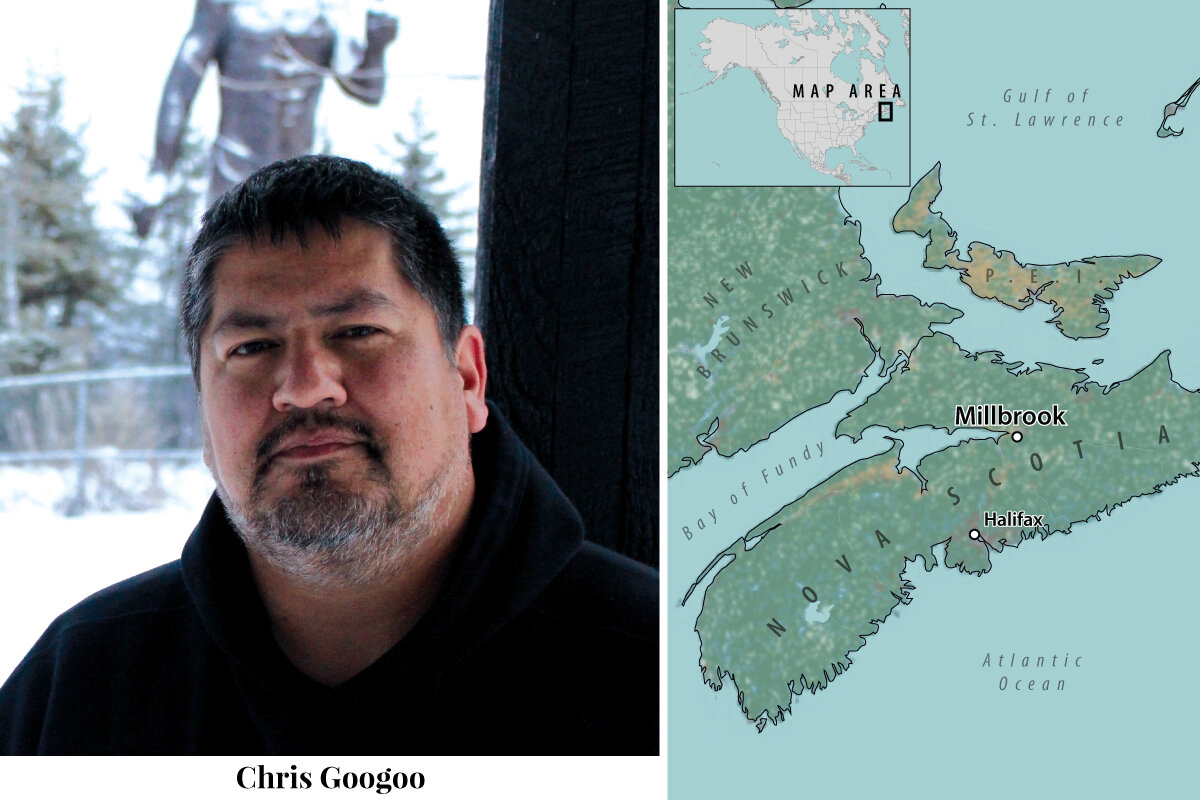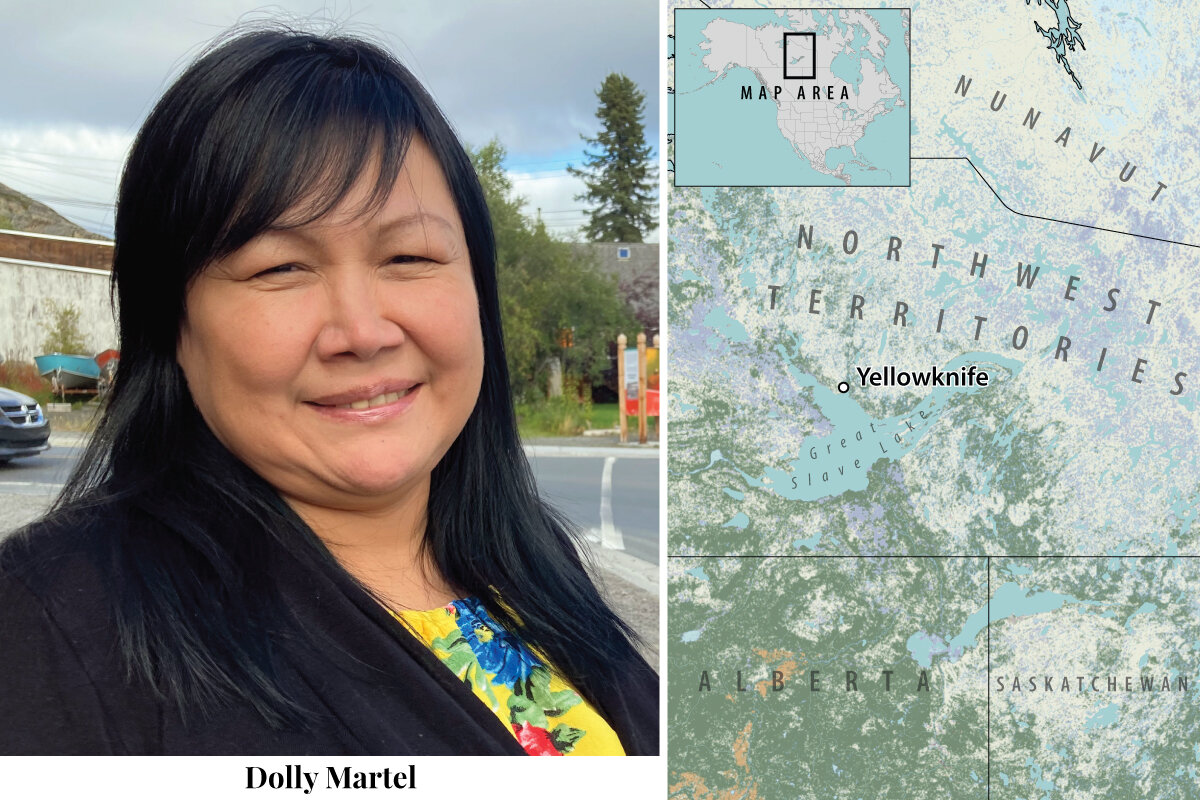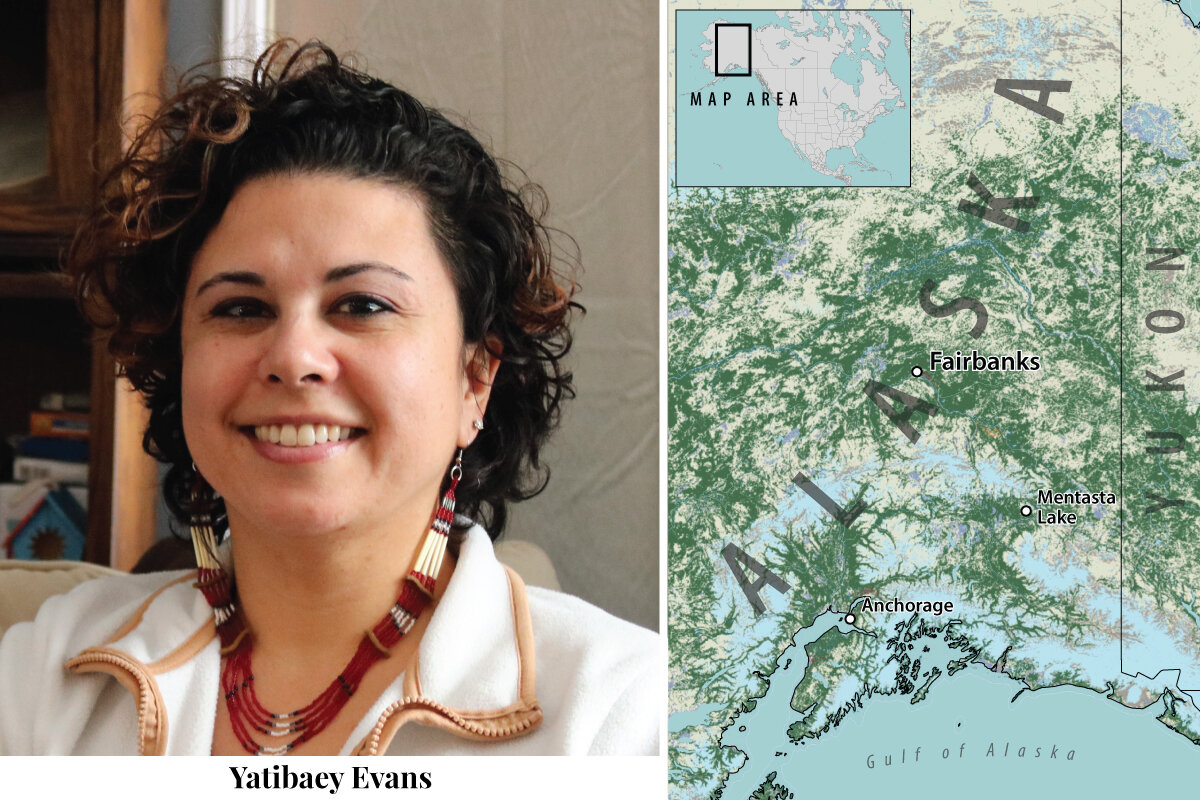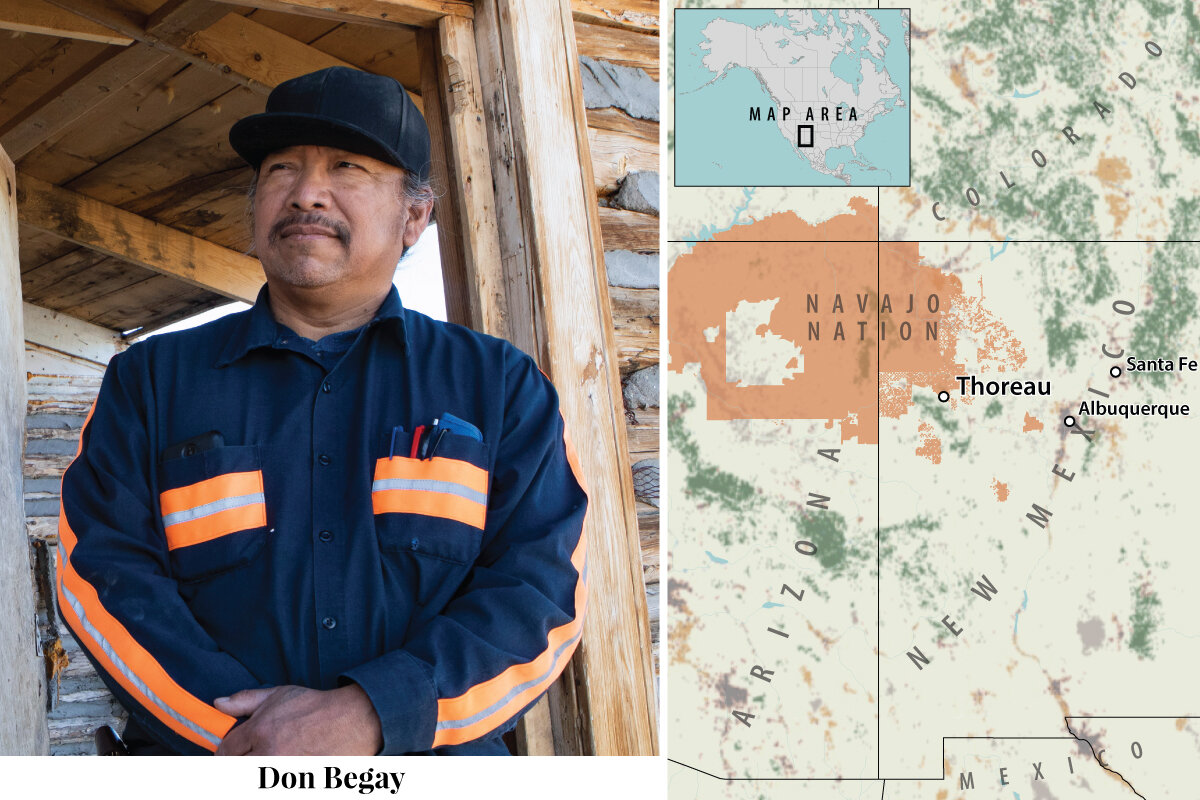Voices of 'Turtle Island': How Indigenous peoples see their North America
Loading...
Indigenous communities across North America have long lived with��harmful stereotypes perpetuated by settler societies: that they are drunks, that they are beggars, that their Indigenous ways are anti-science, that their languages are outdated.
Across the continent that they call “Turtle Island,” many from Fairbanks, Alaska, to rural Nova Scotia, to the Navajo Nation talk of their communities’ enduring struggles.
But speaking to Monitor reporters on assignment,��six people from different Indigenous communities��focus attention on what they, and others like them,��are doing to push back, to give back, and realize their dreams for “Indian Country.”��
Why We Wrote This
Americans and Canadians have ignored and harmed Indigenous North America for centuries. But Native communities are working to take control of their own destinies and restore their visions of the future.
Their comments have been slightly edited.
Melissa Spence is from Long Plain First Nation in Manitoba and has been volunteering with the Bear Clan Patrol, an Indigenous-led community safety group in Winnipeg, for almost four years.
I lost my brother to suicide. It will be five years in December.
And the first year I lost him, I lost myself. I just didn’t have any faith in anything anymore. And it was my cousin’s idea to join Bear Clan. She was like, “Come out.” It’s like she always says, helping is healing.
So I come out. I feel better. I get exercise too. It’s about being here for the community, for people.
I think the biggest problem that we face is racism. With everything that’s happened over the last year, with the children found in graves across Canada on these residential school grounds, it took that much for people to go, “you know what? Yeah, Indigenous people haven’t been treated fairly.” If it had been anyone else, a whole other race, it would have been a whole other situation.��
My dad��–��he legally adopted me – is a residential school survivor. He attended residential school on his reserve in Sagkeeng, just north of here. And his younger brother, who is two years younger than him, also attended. He actually lost his brother Tony in residential school. He died there. Of course, there was no real digging into it as to why. I’m the oldest of five kids and the only one my dad ever shared these things with.
There are some really traumatic stories. You see it every day being out here in the streets. We see people every day that are still suffering from these traumas. And it’s intergenerational. And the cycle continues.�� It comes down to someone in the family being able to break that cycle and say, “I want better.”
My biological father, he committed suicide when my mom moved on. He was very abusive towards my mom. That’s what made my mom leave him. My mom took us away. I give all gratitude towards my mom because I feel like if she had stayed with him I wouldn’t be who I am today.
It’s groups like [the Bear Clan] that give me hope.����
I think of what my mom’s gone through and then what I had to go through. And then when I think of hope, I think of our kids. Empowering our youth. Like my niece is a [Bear Clan] walker. I’m raising her since my brother passed away. She’s lived with me since she was four. And she’s one of the leaders for the [Bear Clan] youth patrol. And then my grandson, who just turned 12 today, he also walks with the Bear Clan Youth Patrol.
I love being a part of the Bear Clan. You know, from when I was in a dark place there, when I lost my brother, this just completely changed everything. I just love being there for people and just showing them that there’s someone who cares about them.
I think a lot of us have ties in that sense, to some degree, in some way. And that’s why we come out. To heal ourselves or to help others.
– As told to Sara Miller Llana
Irene Bennalley is a rancher on the Navajo Nation, home of the Diné people.
People think that everything’s free on the reservation, and it’s not.
Like for me, I don’t get handouts. Our home here, we’re barely getting stuff done. On the inside, the ceiling hasn’t been replaced because most of the money’s gone to keeping the animals alive. We’ve got to get the materials ourselves, we’ve got to do the labor ourselves. They’re trying to make it to where we just rely on the government, that’s what they’re trying to do to us now. But there’s some of us that are fighting it.
Out here there’s still some people that don’t have running water or electricity. Even my mom. My dad did later, we’ve got electricity and running water. But she never experienced having running water or electricity. Still, to this day, some people don’t have it.
And then the roads. In Arizona, where it gets rain or snow, the snow starts to melt and it gets so muddy, they park their vehicles along the main road. They can’t get off it to get home. They have to walk home. The roads are just bad.
You really can’t change much. Let’s use the sheep as an example. Sheep will go where the leader would go, they’ll just follow. But here, with people, if you want to change something, there’s always going to be one that’s not going to agree with you. So it’s going to be hard to really change something. And I think that is one of the problems with our Native people. Everybody is not in agreement.
What’s giving me hope? The fact that the sun comes up, and that if we decide we’re going to make it a good day, it’s going to be good.
– As told to Henry Gass
Chris Googoo is the chief operating officer of Ulnooweg, an organization that has been working toward a goal of self-determination for the Mi’kmaq Nation through economic development and education for 35 years. He lives in Millbrook First Nation in Nova Scotia.
When I look at myself personally, and the journey that I’ve been going through personally, for the last five to 10 years, I’ve been trying to understand what it is actually to be Indigenous, and what it actually is to be an Indigenous community, an Indigenous nation, and all these things that have come up in the last decade in terms of residential schools, Indian day schools, the treaty relations, and ongoing fights with the government that we’ve had in the last 20 years.
The way we do things within the community, the way we do things with family, is not the same way as it’s done outside of the community.
I use an example that an elder told me. They, of course, had all the Indigenous knowledge about ecology and forestry, and they went through the university system, they went through getting their masters, not to gain knowledge, but to see where Indigenous knowledge can match up – that’s [called the] two-eyed seeing concept.
And she gave an example of where she took a bunch of forestry graduates out, and she looked up in the sky and said, “Oh, it’s a good day to burn the forest floor, for management.” And, with all their education, they couldn’t see that, the students.
She talked about how she saw something gliding through the air at a very high level. And she explained that our people, Indigenous people, looked at the environment and looked at the signals of the animals and how they basically acted in their own natural settings, and it told us when to do things. The higher winds, of course, how they were behaving, gave them opportunity that if you light it up ... it wouldn’t basically expand or go out of hand.
So the forest graduates were just commenting that in all their years, they never learned anything like that. So that as an example is how ... you take that Indigenous knowledge of just a simple thing of a bird flying in the wind, as science. ... We have a lot of stories and observations of nature, that still require science to validate. But our knowledge also validates the science that comes with it. So they validate each other.
– As told to Moira Donovan
Dolly Martel is a South Slave Dene from Hay River, Northwest Territories. After struggling with addictions and homelessness for years, she now helps other Indigenous people in Yellowknife.
Both my parents are survivors of residential school, so there was a lot of alcoholism in my family, a lot of abuse. There was a lot of violence on the reserve. I grew up being sexually abused. A lot of that took a toll on me.
The first time I did cocaine was when I was probably 15. Crack cocaine kind of hit my reserve in my early 20s. At that time I owned my own home. I was in a happy relationship and had my kids. The day that I tried crack cocaine was the last day I walked my daughter to school. I lost my partner, I lost my home, I lost my kids.
When I turned 21 I came to Yellowknife, and it just got worse. It was over 20 years of my life that I lived on the street. Everybody lost hope for me.�� One day in 2014, my dad had come to look for me, but when he got home, he was crying. He told my mom, he said, “I found her, but that’s not my baby.” He hugged me, but said he didn’t feel anything, like I was gone. That really stayed with me for a long time.
One day I saw myself in the mirror, and I was stunned by how skinny I was, how my face looked. And I thought, “this is not you.” I talked to myself in the mirror. “What are you doing to yourself? You’re supposed to be a strong Dene woman, Dene women don’t live like this.” And I took all my drug paraphernalia and I threw it away. I’ve been clean for going on eight years. My family has forgiven me.
I make moccasins and vests and things like that. I could sew and stuff like from watching my grandmother and my aunts when I was younger. And I started doing little earrings and things like that, just on the side to have a little bit of spending money. To go to the movies or to buy something and buy food or whatnot. And then my partner and I were invited to a crafts market. And we were doing really well and meeting people from all over the world. And it was just so fun. And ever since then, it’s just like my Facebook just grew and people wanted more and more and more. I don’t know why.
I’m doing things with moose antlers and moose hide and things like that. I’ve never had so much respect for an animal than I do now. I am reconnecting with my Dene heritage through listening to elders. I do fundraisers for homeless people. I help families. I try to give back, because I took so much away from my own community. I’m going to do what I can now to try to make it better for somebody else. And if it’s sharing my story to give somebody else hope, then I hope they can overcome it.��
I really believe the things I’ve been through in my life really made me the strong and resilient person I am today.
– As told to Sara Miller Llana
Yatibaey Evans is the creative producer for animated children’s series “Molly of Denali.” She is Ahtna, originally from Mentasta, Alaska, and now lives in Fairbanks.
I think one of the bigger challenges facing our communities is healing from the traumatic past that was forced upon us. Learning from the past and healing from that.
There’s the old saying, “Kill the Indian, save the man.” And so boarding schools cropped up, Indian boarding schools. And we were taken from our families and told that our ways were heathenistic and that we would go to hell. And made to cut our hair and made to stop speaking our language. My uncle, Fred John, was taken when he was 7 years old, and his sister was only 5. And they didn’t go back to our village of Mentasta for two years. During that time, he was abused, all in the name of assimilation. And then when he went back home, his parents wouldn’t speak their Ahtna language to him for fear of retribution when he went back to school.
And so if you can think about the healing or processing that people like my uncle have had to go through … it’s hard to sit with emotion, it’s hard to sit with the struggles that we go through in our minds. But they’re all part of our culture.
I think the biggest misperception [Native Alaskans face] is that we’re just a bunch of drunks. And we don’t have anything valuable to contribute, and that’s not true. And there are ways in which people have decided to try to numb the pain of the past that aren’t healthy. But there are a lot of healthy people out here doing really good and powerful work and helping to raise amazing, strong children for our future.
I feel like in the day of communication that we’re in now, we’re able to share so much information across generations and communicate how important our lives are and that we all have values to share and help our world heal.
– As told to Jessica Mendoza and Jingnan Peng
Don Begay, of the Diné people, is a site worker for nonprofit organization DigDeep, which is bringing water into people’s homes on the Navajo Nation for the first time. Many families there lack running water and electricity.
I think when we call ourselves a sovereign nation, we’re not really. How can we call ourselves a sovereign nation when we don’t have the resources to generate, [to] economically build up our own? This is it. I mean, this is substandard. A lot of people don’t like to live like this. I don’t like going and getting water and using an outhouse. The younger folks are not going to stick around for that. They say, “No, I don’t like this life.” So they’re going to leave for bigger cities.
At least [DigDeep] showed up and we gave them water, so we’re going to make water come into their homes with these tanks that we have. It’s temporary, but at least it’s something.
Most people that come out here, they say, “My God, this is how you live?” Well, over thousands of years we’ve adapted to how we live. Our people have survived. Not only us, but you know, you’ve got the Black folks, you’ve got the Mexican Americans. They have adapted to mainstream America, [or are] trying to. And we’re slowly like still in the back seat.
And right now, it’s good that there was a Black American that was the president. That’s a start, but we need many more, you know. Not just the African Americans, but I think about all the races, they have a lot of knowledge of what America is really about.
[People think we’re] beggars. Or drunk. “Oh, I don’t know, I don’t feel like hiring that guy. What, is he an Indian? Nah, he’s got to be a drunk.” A lot of people look at a person’s history and they say, “Oh, well, he’s Indian, he’s a savage. He doesn’t understand how we live.” Oh wow, really? That’s what they think? But the thing is, how do we survive a thousand years? We didn’t let our kids die because of starvation. No, we adapted.
Doing this is my way of helping people. It really helps. I’ve seen America, I’ve seen corporate America because I used to work for corporate America, and I know how they operate, which is just more of the budgets, the figures, the numbers. But here, the numbers is more, how many people can you help today?
– As told to Henry Gass



